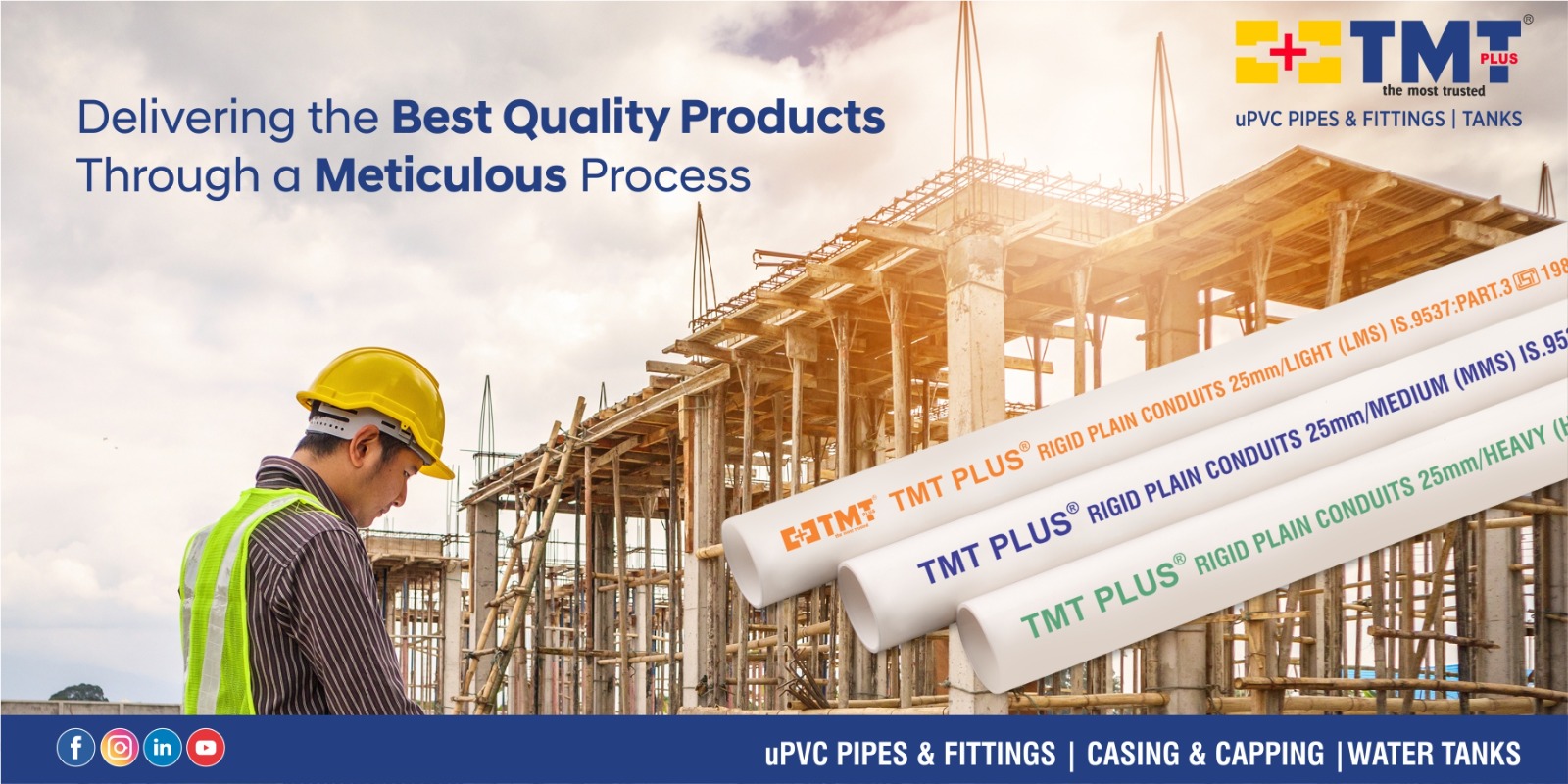 uPVC conduit manufacturers play an important role in the construction industry by producing durable and versatile conduit pipes used for electrical wiring installations. The process involves several steps to ensure the quality and consistency of the final product. Let's dive into a typical day in the life of a uPVC conduit manufacturer.
uPVC conduit manufacturers play an important role in the construction industry by producing durable and versatile conduit pipes used for electrical wiring installations. The process involves several steps to ensure the quality and consistency of the final product. Let's dive into a typical day in the life of a uPVC conduit manufacturer.A Day in the Life of a uPVC Conduit Manufacturer
Here is the 12-step process that we, as India’s leading PVC conduit pipe manufacturers, follow to deliver you the highest quality uPVC conduit pipes:
Raw Material Acquisition
The first stage is to acquire (to grab or to pick) high-quality raw materials, notably uPVC resin, which serves as the conduit pipes' basic material. Additionally, additives such as stabilisers, pigments, and processing aids are obtained. These materials are chosen based on their qualities and suitability for meeting the necessary standards and specifications.Batching
Batching (measuring) is a vital operation in which raw components are properly measured and combined according to preset formulas. The amounts of uPVC resin, additives, and other components are carefully managed to provide the appropriate qualities in the finished product. Any deviations in the batching process might have a major impact on the conduit pipes' quality and function.Extruder Operation
The blended materials are then put into an extruder / (a machine that forces a material into a designed material). where they are heated and melted into a uniform molten mass. The extruder uses pressure to force molten material through a shaping die, forming the desired shape of the conduit. Regular maintenance and calibration of extruder equipment are required to ensure uniform performance.Head and Die Assembly
The head and die system is an essential part of the extrusion process, moulding the molten uPVC compound into the appropriate PVC conduit pipe shape. The design of the (head and die top and bottom )determines pipe diameter, wall thickness, and surface quality. uniform machining and regular inspection of head and die components are required to ensure dimensional accuracy and product quality.Sizing
After going through the die, the uPVC conduit is sized to ensure its dimensions satisfy the requirements. This procedure may include running the conduit through instruments or scaling sleeves to get proper dimensions. Proper size is critical for meeting industry standards and regulatory requirements, as well as ensuring compatibility with fittings and accessories during installation.Cooling
Rapid cooling of freshly extruded conduit pipes is critical for hardening the material and retaining its proper shape. Water or air cooling systems are used to control the cooling rate while preventing distortion or warping. The efficiency of the cooling process has a direct impact on production speed and product quality.Haul Off
The haul-off unit takes the cooled conduit pipes away from the extrusion line at a controlled rate. This procedure contributes to maintaining uniformity in pipe size and surface finish. Proper tension control and speed regulation are required to prevent the pipes from stretching or distorting during transport.Print Station
At the print station, product information such as size, brand logo, and technical data are printed on the conduit pipes. This information makes it easier to identify products, trace them, and ensure they meet industry standards. The ink choices and printing procedures are adjusted to guarantee that the printed markings are durable and legible. All this is accomplished via a separate print station, which ensures that each component is printed clearly and accurately.Cutting
Conduit pipes are cut to the appropriate length with saws or cutting machines. Precision cutting is required to provide regular pipe lengths with clean ends. Automated cutting systems are frequently used to improve efficiency and accuracy in the cutting process. This phase prepares the conduits for packaging and further processing.Storage
Finished conduit pipes are moved to designated storage sites or warehouses. These storage facilities are outfitted with appropriate shelves, cabinets, or containers to arrange and protect the pipes from harm. Temperature and humidity controls are used to preserve product quality and avoid degradation over time. Proper storage aids in inventory management and efficient dispatch when orders are received.Coiling
Depending on the customer's needs, various uPVC conduits can be coiled into compact rolls (bundling) or packed in coil shapes. This is done for easy transportation and storage. Coiling machines effectively windpipes into coils with specific diameters and lengths. Straps or packaging materials are used to secure coiled pipes and keep them from unwinding during storage and shipment.Dispatch
Finally, the packaged uPVC conduits are ready for shipment to consumers. Orders are inspected, selected, and packed based on customer specifications. Proper marking and documentation are completed to ensure accurate tracking and inventory management. Dispatch schedules are coordinated with logistics partners to ensure on-time delivery to building sites or retail locations.The manufacturing process of uPVC conduit pipes involves a series of meticulous steps, from raw material procurement to dispatch. We understand that each stage plays a crucial role in ensuring the quality, consistency, and reliability of the final product.
Through efficient management and adherence to stringent quality standards, we aim to manufacture the best PVC electrical conduit pipe that is cost-effective, durable and delivers the most optimal performance. So if you are ready to upgrade and enhance the electrical safety of your space, buy and install the PVC conduit pipes from TMT Plus today!
